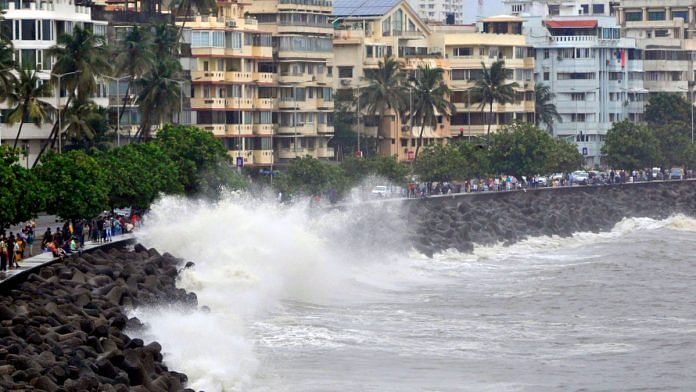It is hard to deny that the weather has changed. Heat waves and floods, unseasonal rains, and late snowfalls are increasingly common. Climate change is here.
If this wasn’t enough, there is one more aspect of climate change that we haven’t discussed much—that of rising sea levels combined with land subsidence (sinking cities).
The financial sector has to wake up and recognise climate risks as they play a role in the allocation of capital. Better estimates of the magnitudes involved will help us invest in climate action plans that help us fortify ourselves before and cope after, to deal with what is most certainly going to unfold in our lifetimes. We need granular estimates of which parts of the city are more vulnerable, what is the value of the infrastructure at risk, and how the expense of human displacement is going to be borne.
Also read: Lifting the smog won’t be cheap. India must think finance for cleaner air
How large is the problem?
According to estimates by the Intergovernmental Panel on Climate Change (IPCC), the current scenario of carbon emissions will lead to the rise of global sea levels by at least 1m by 2100. This has grave implications for our coastal cities.
Take Mumbai, for example. The mean sea level of the city is about 2.51m. During a high tide, the seawater rises to an average of 4.42m. The highest mean sea level at high tide has been about 5.39m. These numbers serve as a benchmark of what Mumbai can withstand, the level at which life and property are not destroyed. The IPCC calculations project a median sea-level increase of about 0.28 to 0.7m by 2100. This means that over the next 75 years, Mumbai’s mean sea level will become at least 3m, and high tides could be as high as 6m. At an intuitive level, a mean sea level of 3m means that much of the road and housing infrastructure would be destroyed.
Now add estimates of subsidence. New research suggests that the city is sinking at the rate of 2mm per year. Cities sink because of the weight of the buildings and groundwater extraction. This implies that by 2100, Mumbai would have sunk by about 0.15m. We are going to have a city that will have sunk by 0.15m, with the sea level having increased by about 0.5m. Both these factors should lead to more intense flooding.
The question for all of us is: how much damage, at what horizon, and at which locations will this combination of rise in sea levels and land subsidence cause? Will land subsidence change the 75-year horizon for the sea-level increase? If so, by how much? Should we expect coastal erosion in 25 years? Or in 50? Either way, this is not so far into the future. The coastal erosion in Kerala is already underway. The sea is estimated to have taken away 650 acres from the Thiruvananthapuram coast alone in the years between 2006 and 2020.
Also read: InvITs—a made-in-India solution for financing the green transition
Financial sector implications
The financial sector in any country has a huge exposure to its large cities. Take the example of the banking sector. If a bank has a large share of its credit portfolio in Mumbai or other important coastal cities, then the impact of sea-level increases combined with land subsidence will affect the borrowers’ ability to repay. This will affect the bank’s ability to make collections, potentially leading to undercapitalisation of banks.
We should also see a correction in house prices as people start incorporating climate risks in the pricing of properties near the coast. This can have significant consequences for loans taken against properties, and the housing market in general. The insurance industry faces similar issues. Climate risks pose an issue for prudential regulation as well as systemic risk.
How is the industry seeing climate risks? The RBI Report of the Survey on Climate Risk and Sustainable Finance has some interesting observations—33 per cent of public sector banks and 44 per cent of private sector banks that were surveyed by the RBI had yet to analyse the materiality of climate-related risks. Given this, it is not surprising that only 17 per cent of public sector banks and 25 per cent of private sector banks claimed to have an internal strategy for integrating climate risks into their risk management framework.
Earlier this year, the RBI released a draft disclosure framework on climate-related financial risks. This is a start, but the financial sector has a long way to go. It needs to take stock of its exposure to climate events, and the changes in provisioning norms of banks to cope with them. We need measures of interconnectedness between the various financial institutions that could potentially lead to a systemic risk problem.
We have been used to thinking that rising sea levels and sinking cities is a problem that afflicts poor people, farmers and cities like Jakarta and Ho Chi Minh. But India’s cities and banks are not particularly safe either.
Renuka Sane is managing director at TrustBridge, which works on improving the rule of law for better economic outcomes for India. She tweets @resanering. Views are personal.
(Edited by Theres Sudeep)



